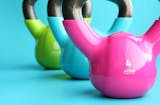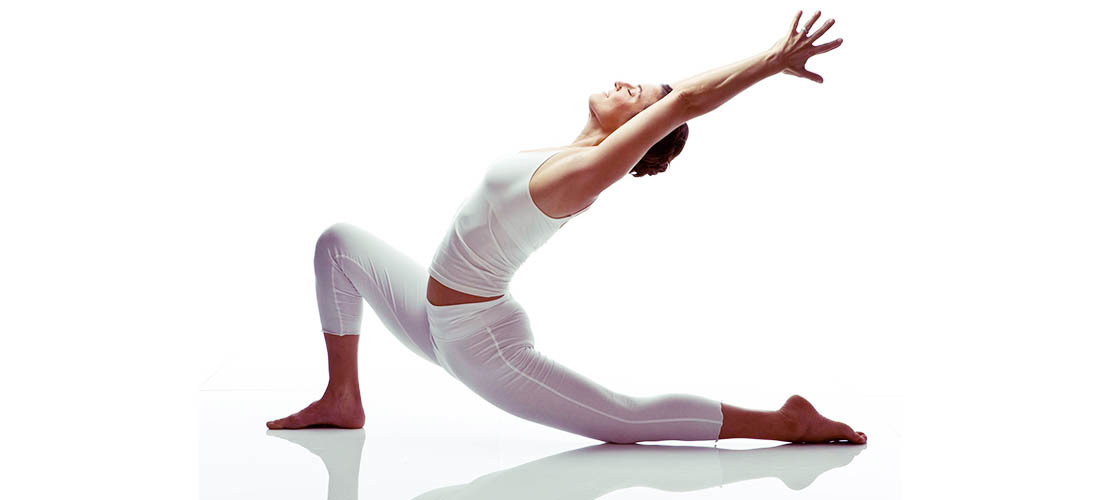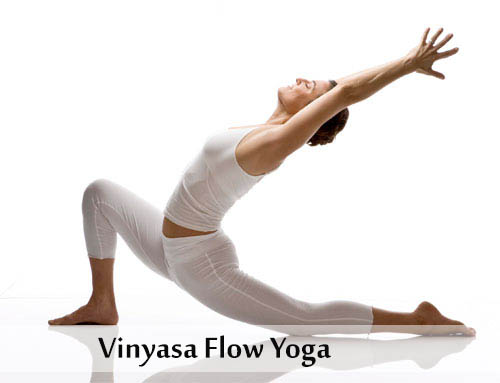Picture feeling as though you’ve unlocked some new source of energy in your body. Not anything like “I-had-enough-sleep” energy, but something extraordinary, like “Hell yeah! I-cannot-wait-for-the-day-to-begin” energy.
Vinyasa Flow Yoga does not award you with any extra joules, it’s just that you feel more energetic mentally.
- But is that the only benefit one can have?
- What makes this yoga unique?
- What does going with your vinyasa mean?
Let’s explore the basket ourselves.
Contents
What is Vinyasa Flow Yoga?
It is an open system of yoga practice where every class is different from the previous one. It is also known by names like Flow Yoga or simply, Vinyasa Yoga. Though it is based on Hatha Yoga, it actively draws inspiration from various dance forms. As a result, appears more feminine with curvy fluidic movements in comparison to the precise staccato manoeuvre of Ashtanga Yoga.
See actually, Vinyasa (meaning : to transit in a special manner) is a very generic term that houses all kinds of yoga where movements are kept in sync with the breathing. Popular styles, such as Ashtanga and Power Yoga, make use of this method, but for the sake of clarity, they are most often called by their individual names. They are also Vinyasa Yoga styles actually.
What differentiates Vinyasa from Ashtanga yoga, is basically the influence of various dance forms on Hatha yoga.
USP of Vinyasa Yoga
The best part lies in its dynamics. Its ever changing and ever new, mixing things up, it keeps you on your toes. So, you are always guessing what next pose could be, consequently, there is no plateau effect that you start experiencing due to repetitive of poses. Moreover, its highly transformable, so every teacher gets creative choreographing a unique sequences according to his or her own philosophy.
Read: How to Find The Right Yoga Teacher
Finally, the pace. You may find it variable because of individual aesthetics, but usually it is fast paced. So there’s an added cardiovascular benefit, a side effect of continuous movement.
When shouldn’t one do it : Sorry folks! No off days. I mean, no cancellation for special lunar days like full moon or new moon. Follow class schedule, period.
A Typical class
The class will give you feel of some sort of an aerobic dance class where the step changes on rhythm of your breath. There will be music filling up the room, but the beautiful part is the togetherness you sense when you listen everybody breathing with you.
In your class, your teacher might ask you to “follow your vinyasa” or “go with your vinyasa.”
By that she implies you shift position according to your breath and not hurry or slow down the poses. As a general rule, upward movements are related with inhalations while downward with the exhalation of breath.
At times, I have found, teachers asking to “do vinyasa” and expecting a set of poses, which is erroneous from the first go. I assume, till now you are pretty aware of what Vinyasa means, so you understand that its precisely about breath syncing the movements, and not performing some pre-defined sequence.
Anyway, the poses will range from a sequence of Surya Namaskar (sun salutations) to many standing and inversions poses. Also, since they’ll be performed at a vigorous pace, expect a lot of sweating, which is good.
When your blood heats up, it gets thinner in viscosity, and hence, is able to creep into the pee-wee spaces of your body. Then, as you know, blood leaves the nutrients and takes up wastes, leading to a deep internal cleansing as well as nourishment of the system. And when, every organ receives optimum nutrition, your body begins to function to its optimum capacity.
Some poses from the Vinyasa yoga sequence for beginners include:
- Dancer’s Pose
- Downward Dog Pose
- Mountain Pose
- Tree Pose
- Cobbler’s Pose
- Cobra Pose
- Pyramid Pose
- Easy Pose
A Brief Beginner Guide
Who should do it : Anyone health conscious, free-spirited and adventurous, who hates routine and loves to have fun. Think I just described you?? Well, then Vinyasa may be just your ticket.
Who should not do it : Anyone with cardiovascular, respiratory or musculo-skeletal problems. Even if the teacher guarantees its safe to join, you must always consult your physician first.
What to wear : Since, you are going to get sweaty, a relatively snug shirt of moisture wicking fabric (no cotton please) would be a good idea, one that wouldn’t fall down your body while you are semi-upside down. And of course, comfortable pants.
Diet plan : A balanced diet and lots of water. Ta-da!
Can I do it during pregnancy? Of course! It’s a great preparatory workout in the first trimester. But, I’d suggest you go for its specialized Prenatal yoga version.
Can I do it everyday? Didn’t I already answer that?! Yes, but skip those dreaded days.
Health Benefits
- Increased muscle strength, endurance and flexibility
- Reduced level of stress and alleviation of depression and anxiety[1]
- Improved physical and emotional balance
- Better metabolism and regulation of hunger pangs[2]
- Your focus improves as your body remains in a state of moving meditation
- Improved blood circulation and cardiovascular endurance[3]
- Alert mind throughout the day, so you become better attuned to the body and are hence, able to detect malfunction earlier than usual
- Regulation of blood pressure, pulse rate (A slower pulse rate is an indicator of a heart strong enough to pump more blood in fewer beats) and respiration
- Massages internal organs, thus improving ability of body to prevent diseases[4]
- Strengthens immune system
More than anything else, Vinyasa flow yoga teaches you to live in present and savor each moment. Don’t believe me?? See, when you devote your concentration to your breath, something which is always happening NOW, magic of yoga begins. Gradually, as the mind stops chattering, and your soul gets drenched in peace.
And who doesn’t want that?! So, take out your mats and start practicing!
Related Reads
3. Pranayama – Beginner’s Guide
References [1] Chris Kub. Yoga as medicine: The Science behind the benefits. Yoga Journal (USA). ^Back to Top^ [2] Rawal SB, Singh MV, Tyagi AK, Selvamurthy W, Chaudhuri BN. Effect of yogic exercises on thyroid function in subjects resident at sea level upon exposure to high altitude. Int J Biometeorol. 1994 May;38(1):44-7. PMID: 8039950. ^Back to Top^ [3] Ray US, Sinha B, Tomer OS, Pathak A, Dasgupta T, Selvamurthy W. Aerobic capacity & perceived exertion after practice of Hatha yogic exercises. Indian J Med Res. 2001 Dec;114:215-21. PMID: 12040766. ^Back to Top^ [4] Akhtar P, Yardi S, Akhtar M. Effects of yoga on functional capacity and well being. Int J Yoga. 2013 Jan;6(1):76-9. doi: 10.4103/0973-6131.105952. PMID: 23439856. ^Back to Top^
Last Updated: May 7, 2014
Next Scheduled Update: July 7, 2014







Sharadd
Very Nice